Peony is an unusual, highly fragrant plant. It is the only one in the Paeoniaceae family and contains 33 species originated in Europe, North America, and Asia. Most of them are herbaceous perennials, but there are a few woody shrubs, as well as a lot of hybrids.
If you pick out the right place and provide primary conditions for your Peony, it can flourish for more than 100 years without too much maintenance. You can choose the type of blossom of this plant depending on the structure of its flowers. They can be single, semi-double, or double, but you can find some other combinations as well.
The Most Popular Varieties of Peony
There are three primary varieties of Peony. It can grow as a tree, herbaceous plant, and intersectional type.
Herbaceous
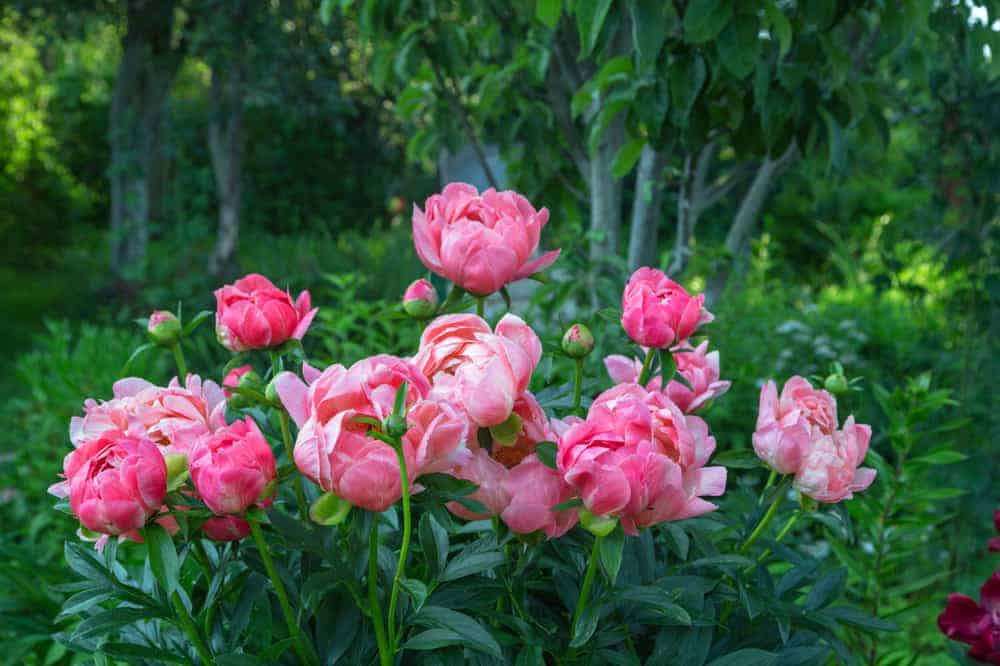
That type of Peony dies down at the end of each growing season and goes through a dormant period during winter. It returns in spring the following year. The most famous wild species of this variety in the US are Peony brownii and Peony californica.
Most gardeners also like cultivars Paeony lactiflora (Chinese peony) and Peony officinalis (Common garden peony). These bushy plants can reach 3 feet (91.5 cm) height.
Peony tenuifolia is a 2 feet (61 cm) tall plant with cute small blossoms and lovely feathery foliage. I find it quite convenient for rock garden planting.
Tree
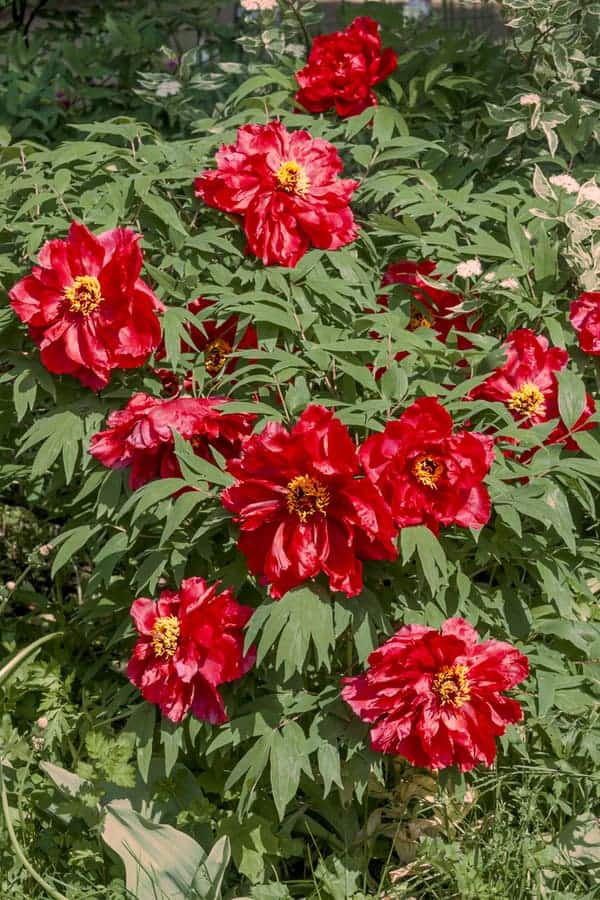
All modern tree varieties descended from Peony suffruticosa (Moutan tree peony) and Peony delavayi species. The first one is well-known for its golden stamens and enormous blossom on woody stems. The second one is a low woody bush native to China.
All these tree varieties grow slower than herbaceous types, bloom early in the season, and can grow up to 6 feet (1.8 m) high.
Intersectional
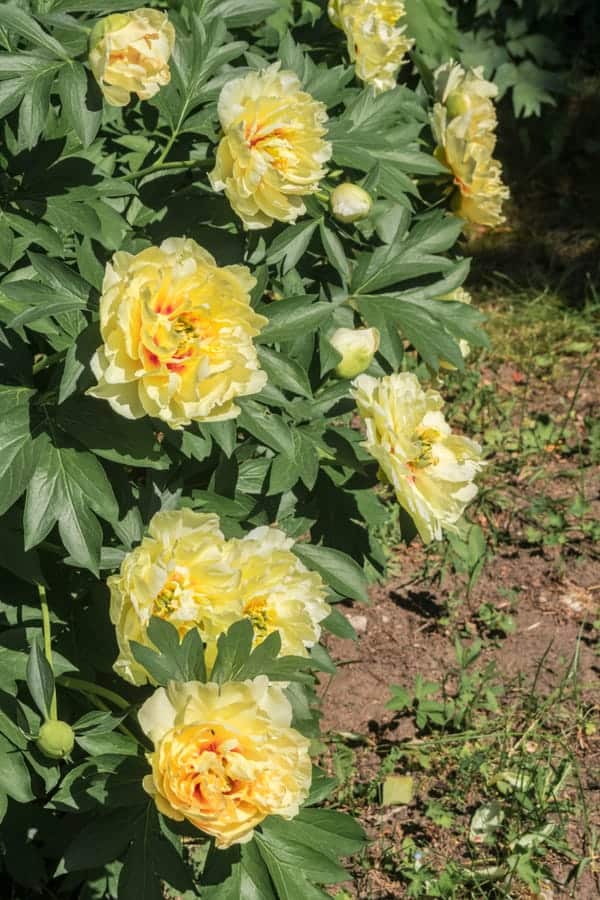
All intersectional varieties belong to a group of ‘Itoh hybrids.’ They were named after Japanese horticulturist Toichi Itoh, which created them.
Basically, these plants are a cross between trees and herbaceous types. Fortunately, they are the best combination of their features. You can expect them reaching up to 3 feet (0.9 m) height.
How to Plant Peony in Your Garden
When to plant Peony
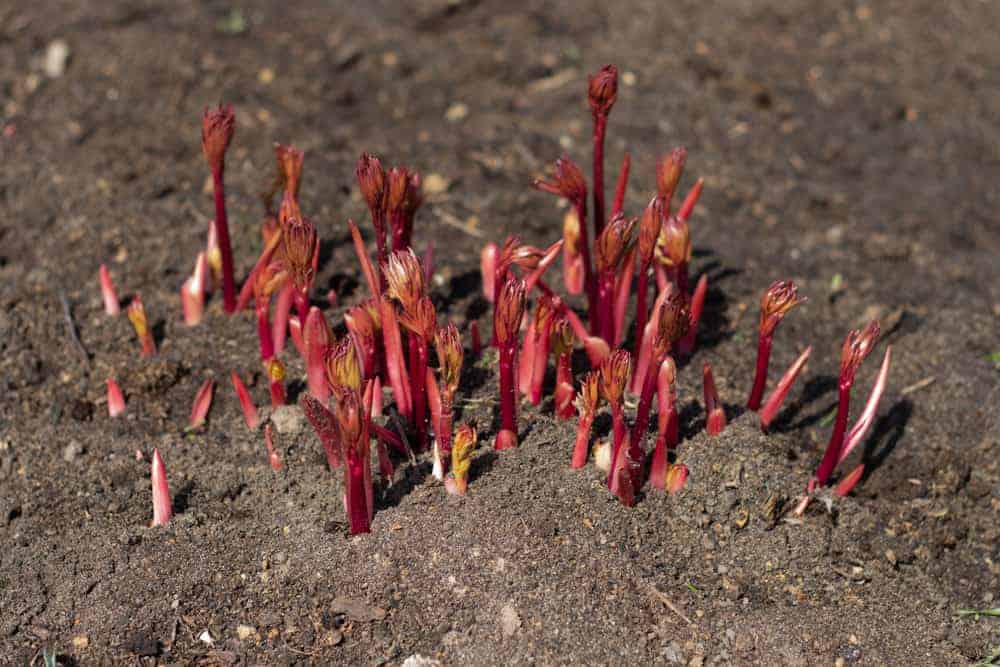
The ideal moment for planting this flower is in fall, from September to October, at least a month and a half before the first frost. That way, you will get abundant blooming the next spring.
Keep in mind that you can plant Peony in spring as well. However, these plants probably won’t flourish for at least two years.
Where to plant Peony
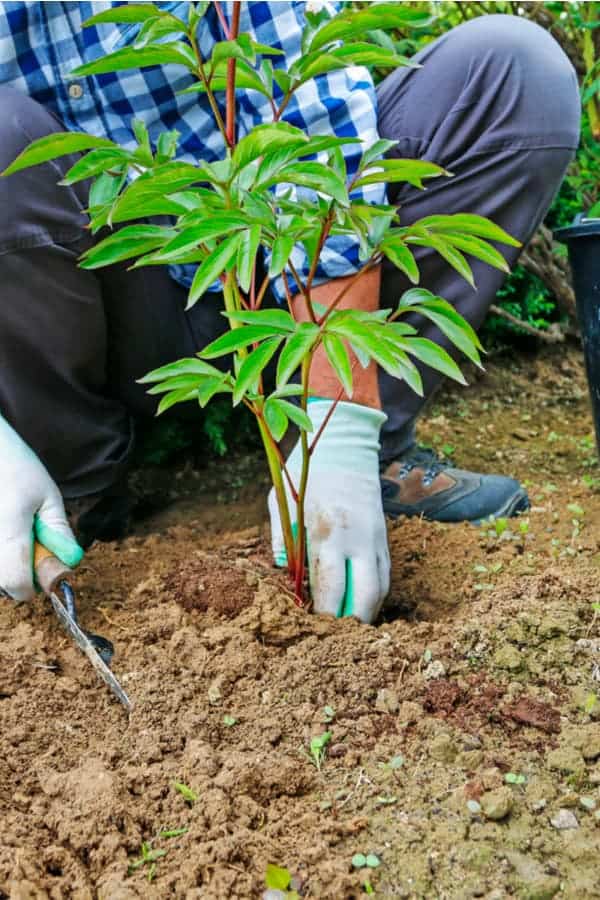
Picking out the right place for this flower is crucial since it lives and blossoms for decades. If you make a mistake and choose wrongly, you probably can’t transplant your Peony successfully because of its deep roots.
Also, you can expect this plant reach up to 5 feet (1.5 m) height, which means that it will need plenty of space, especially after ten years of growth.
How to plant Peony
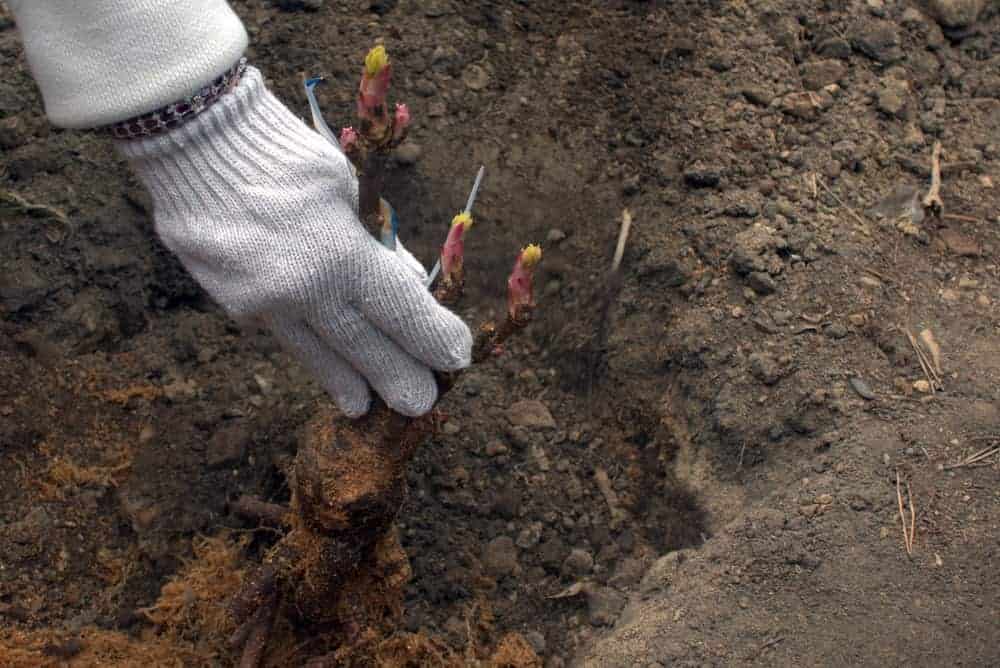
You will see that Peonies are typically potted in a 0.5 to 1 gallon (1.9 – 3.8 liters) large container. The second option is purchasing the tuberous bare roots in a plastic bag with wood shavings or peat moss.
Take care to choose the root clump with at least 3 to 5 small reddish buds called ‘eyes,’ which will elongate over time and become the new stems. If you want to divide bare roots by your own, you can do it when your mature Peony is at least 3 or 4 years old.
How deep you should plant your Peony will depend on the region you live in and the type of flower you want to grow.
- Herbaceous – The ideal way is to put this Peony about 0.5 to 2 inches (1.3 – 5 cm) deep into the ground. The colder the climate, the deeper hole should be.
- Tree – The rule is planting this flower deeper than herbaceous variety. Use a gardening shovel and dig 2 feet (61 cm) deep and 1 foot (30.5 cm) wide hole.
- Intersectional – Plant this type just below the surface of the ground, approximately 0.5 to 1.5 inches (1.3 – 3.8 cm) deep. After digging 2 x 2 feet (61 x 61 cm) hole, add compost and some all-purpose granular fertilizer at the bottom. Then add a shovelful of the gardening soil and place the root ball on the top.
Keep in mind that you should face the ‘eyes’ upward and place them no deeper than 2 inches (5 cm) below the surface of the ground. Otherwise, your Peony will start growing, but it won’t produce flowers.
If you want to grow a few plants in your garden, take care to space them about 3 to 4 feet (0.9 – 1.2 m) apart, to provide excellent air circulation.
The most popular Peony types |
|||
|
Variety |
Height | Flower | Time of flourishing |
| Red Magic | 28 to 36 inches
(71 – 91.5 cm) |
Crimson double flowers, 6 to 8 inches (15 – 20 cm) in diameter |
From spring to full summer |
|
Raspberry Sunday |
25 to 36 inches
(63.5 – 91.5 cm) |
Pink and cream double flowers, 5 to 7 inches (13 – 18 cm) in diameter |
In the mid-spring |
|
Shirley Temple |
25 inches
(63.5 cm) |
Baby pink to creamy flowers, 5 to 8 inches (13 – 20 cm) in diameter |
From late spring to early summer |
How to Plant Peony in a container
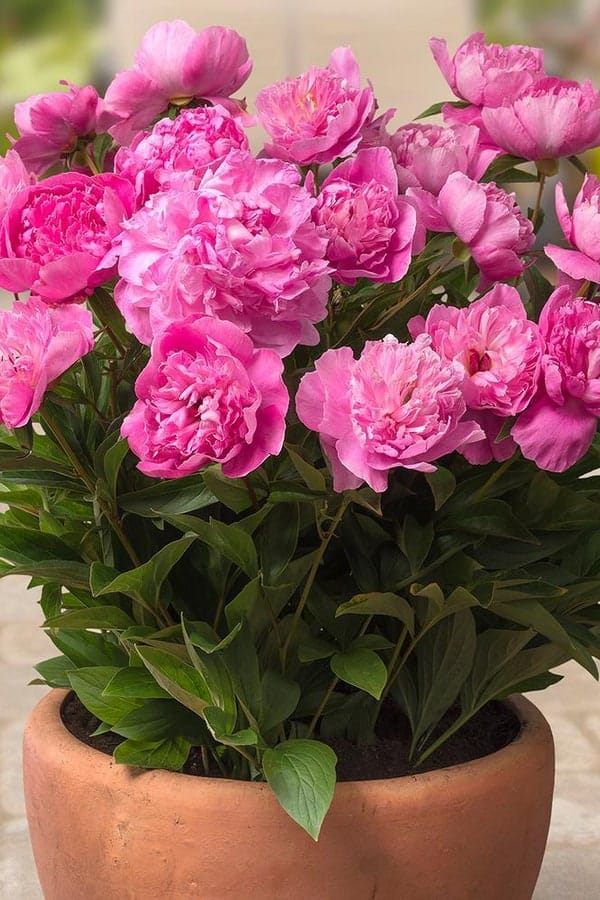
Planting this flower in a container is not convenient, but you can do it if there is no other solution. The way of planting is similar to planting it in the garden.
Dig a hole at least twice as wide as the plant’s root ball, add the compost and soil on the same way, and put your plant in.
Transplanting
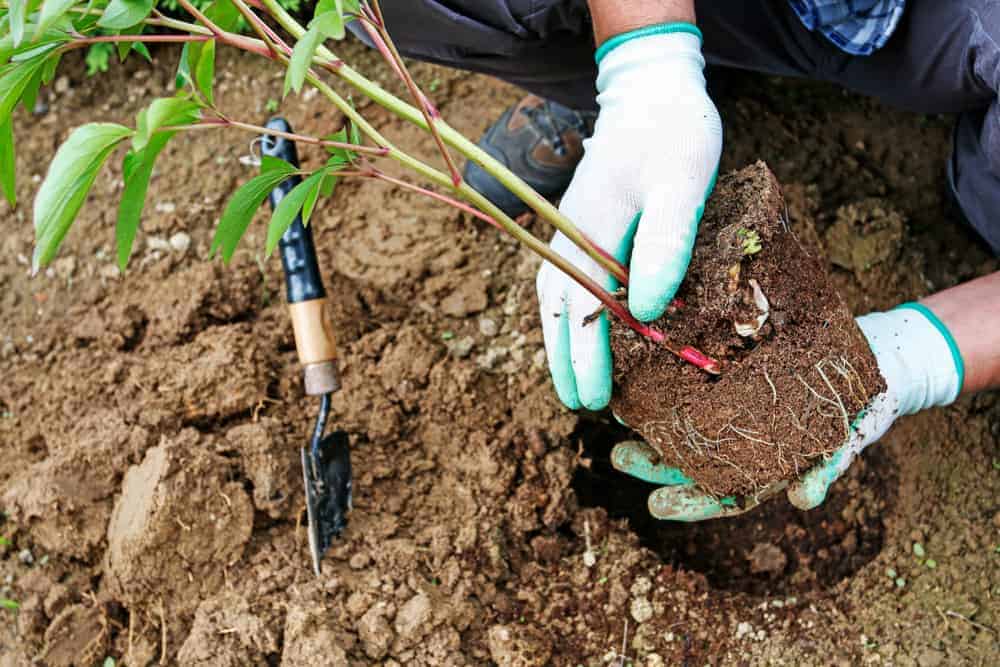
Since the roots of your Peony are strong and complicated, it is a better option to avoid transplanting if possible. If you need to move an established plant, you should be really gentle and careful.
The goal is to disturb the roots as little as possible. Otherwise, you will damage it and cause the death of this lovely flower.
Choose autumn to transplant your Peony. Dig 12 to 18 inches (30.5 – 76 cm) deep hole and add a 4 inches (10 cm) thick layer of compost or peat moss in it.
After you place the plant with as much original gardening soil as possible, fill the hole. Then, try to water it abundantly, and add a 3 inches (7.6 cm) thick layer of mulch around the plant’s base.
How to Care Peony in Garden
Space
Since your Peony can remain at the same place for 70 to 100 years, you should pick out the perfect spot for planting very carefully.
Soil
Peony is an adaptable plant. It thrives in a well-drained, slightly acidic ground, but can stand different conditions as well. For example, you can grow this flower even in heavy clay soil if you mix it with enough compost.
If you prepare the soil properly, you won’t need to add any fertilizer for the first few years. It will be enough providing excellent drainage.
Light
Peony requires at least six hours of full sun daily. Lack of sunlight will cause weaker flourishing and smaller flowers. Also, the risk of fungal diseases will be increased.
Temperatures
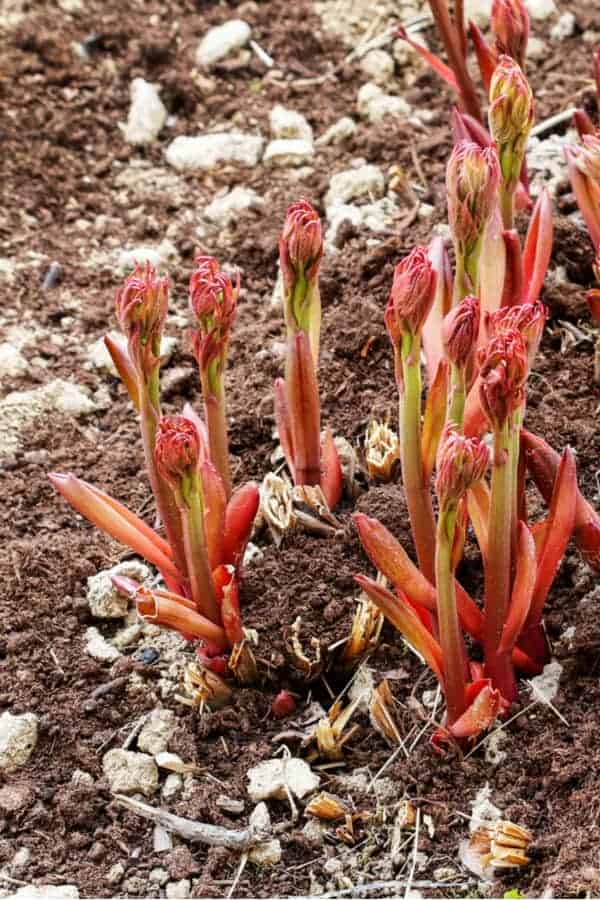
Peony thrives better in colder regions. Cold winter and a longer period of dormancy are beneficial for this plant. Keep in mind that it is not drought-resistant flower and can’t stand too hot days without regular watering.
Watering
Peony doesn’t require too much watering. On the contrary, this plant often has a problem with overwatering. Start watering in spring when the period without rain begins, but take care to provide excellent drainage.
Water your flower deeply once a week and provide 1 inch (2.5 cm) of water on average during summer. It is crucial watering your plant continually right after blooming. That way, you will ensure vigorous growth the next year. Stop watering after the period of dormancy begins.
Fertilizing
Spread a mixture of compost with a garden rake and an adequate amount of fertilizer before beginning planting Peony. If the ground is poor, you should enrich it by applying compost, well-rotted manure, or bonemeal after flourishing in early summer.
Basically, after the initial feeding of a young plant, you shouldn’t fertilize your Peony more than once in two years.
Keep in mind that herbaceous varieties require potassium. Plus, they may need some wood ash or garden lime if the soil is too acid.
Mulching

Adequate mulching is essential for Peony planted in very cold regions. Place the 3 to 4 inches (7.6 – 10 cm) thick layer of shredded bark or some pine needles, at least a few inches away from the base of your flower.
Be careful since mulch keeps the soil moist. It can encourage root rot if winter is too wet. To allow new growth in spring, you should remove the mulch as soon as the cold period passes.
Supporting
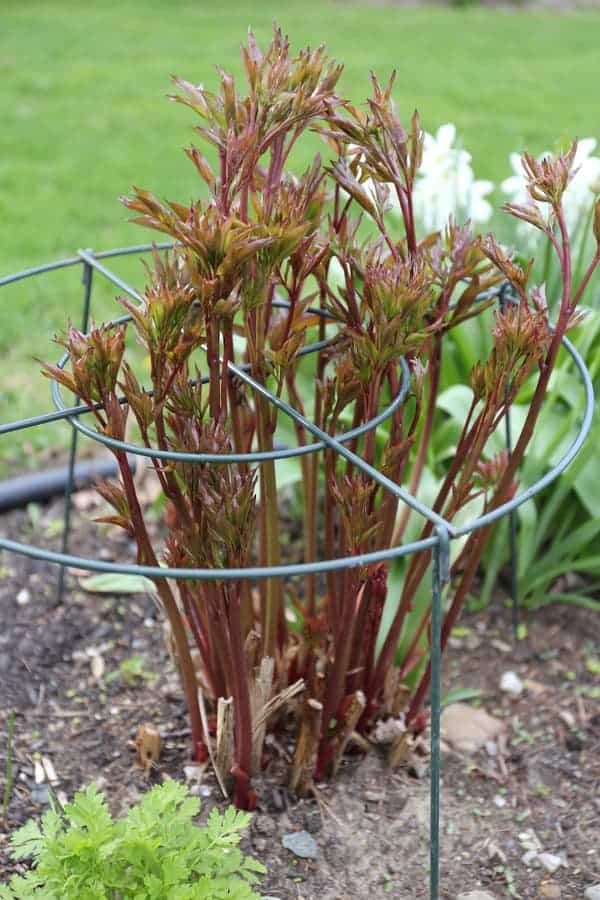
The stems of your Peony are often not strong enough, and can’t support the large blossoms, especially a massive, semi-double flower structure.
Plant your flower in the center of a three-legged metal ring or wire cage to allow undisturbed growth, without the danger of breaking branches.
Also, you need to organize support for your flower before the growing season, when it is just a few inches high. If you miss the moment, you can’t help the plant stand. Once it starts blooming, every attempt to add stick will damage both stems and flowers.
Pruning
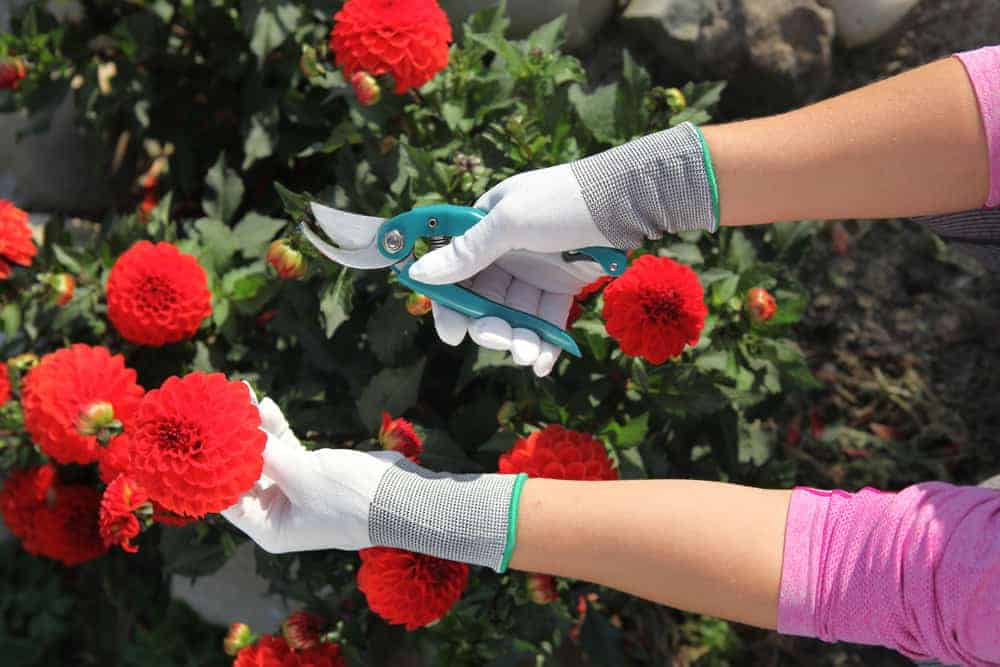
Peony doesn’t need precise pruning to thrive, and you should cut just damaged and infected branches. Avoid cutting younger plants before establishing well.
Once set, your Peony will require cutting. Prune herbaceous and intersectional types at the end of each season of growth to promote better air circulation.
If you prune an intersectional plant, always leave approximately 4 to 6 inches (10 – 15 cm) long stems. On the other hand, an herbaceous peony thrives best if you cut it all the way to the woody parts.
Disbudding
To get gorgeous and large flowers, you should cut all the side-buds developing near the terminal buds’ bases. On the other hand, leave them alone if you prefer extended blooming season.
How to Harvest Peony
If you want these lovely flowers to beautify your home for days, you can cut a few Peonies and put them in a vase. Collect them early in the morning while the buds are still not opened.
Peony Pests and Diseases
Curling of leaves
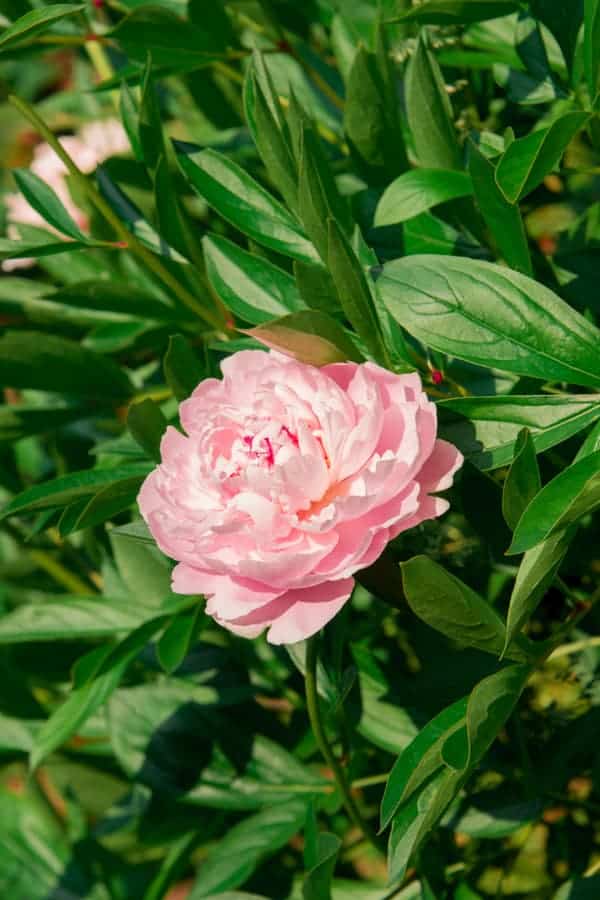
You can expect the occurrence of the curled foliage when your Peony is under stress. The reasons can be lack of water, instable weather conditions, or a virus infection. As soon as you solve the problem, your plant will probably recover and keep blooming.
Lack of blooms
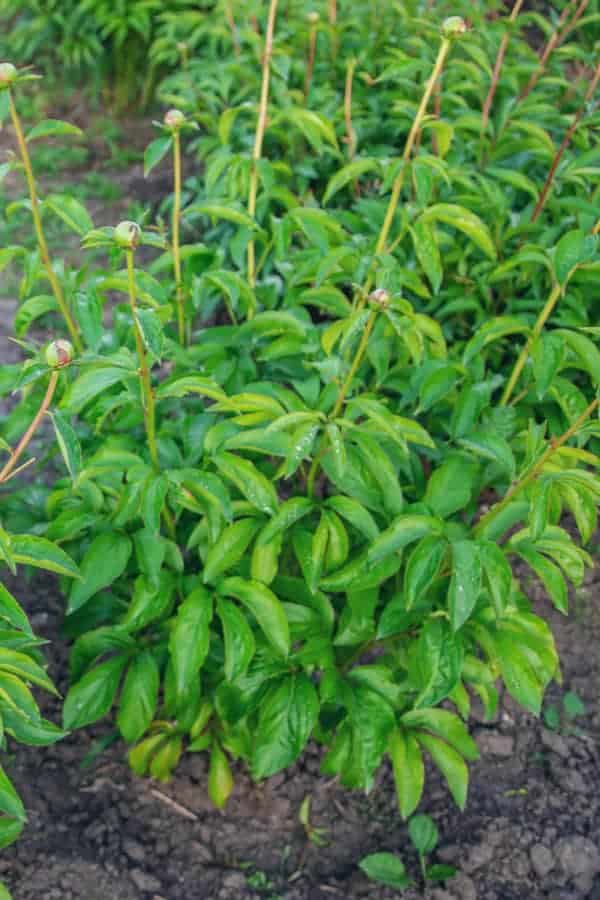
There are a few reasons for the absence of your Peony’s blooming, including:
- You planted it deeper than required
- The location is wrong, and your flower doesn’t get enough sunlight
- There is too much nitrogen in the ground
- Your Peony is still too young, and it doesn’t flourish during the first season
Ants
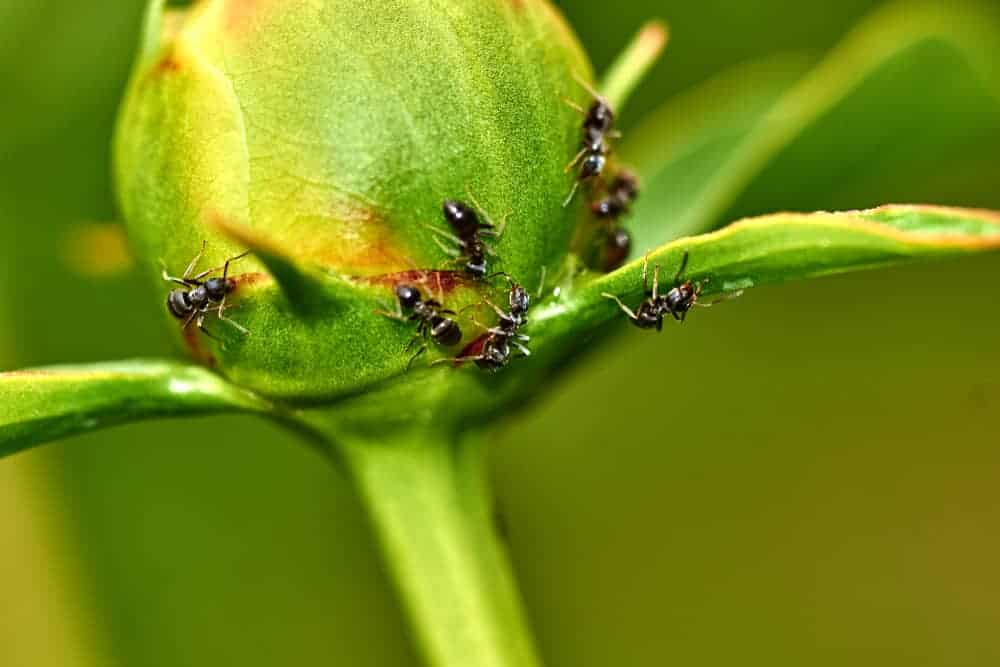
These insects usually crawl on the buds and eat the nectar. In return, they feed on pests damaging your plant. Therefore, don’t fight ants. They keep your Peony safe.
Botrytis

These fungi are present in the ground and cause young shoots to rot. You will notice dark spots on the foliage and stems. Plus, they prevent buds from blooming.
Solve the problem by cutting affected areas. Also, try to work on prevention, including proper watering and airflow.
Rabbits and deer
Fortunately, Peony is entirely resistant to wildlife.
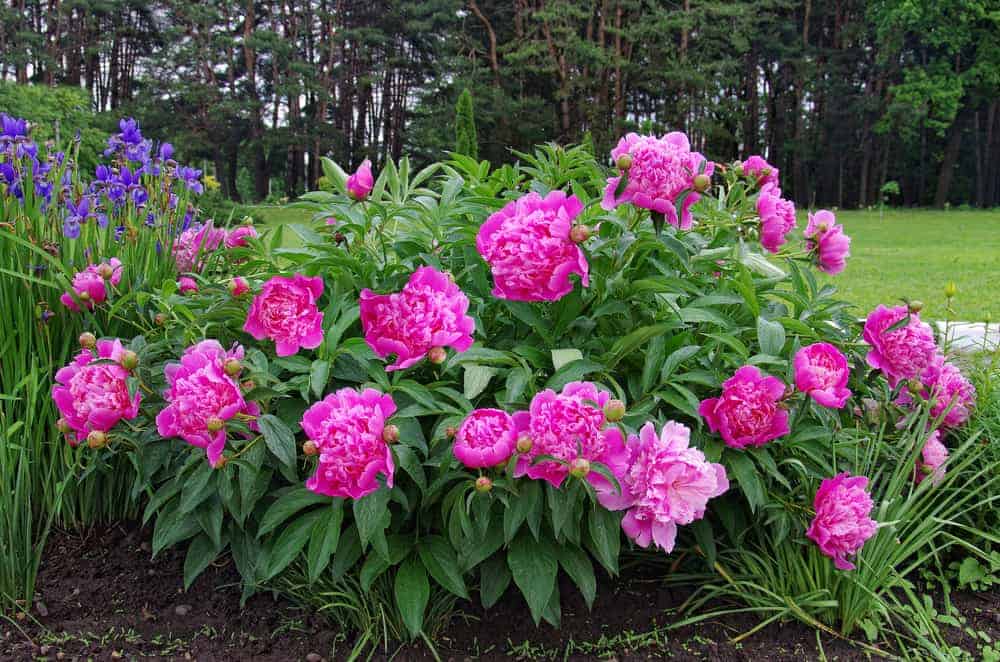
I love the info you have provided. It has helped me immensely in understanding the different plants that I now have in my flower beds and for the placement of new flower beds. This is wonderful!